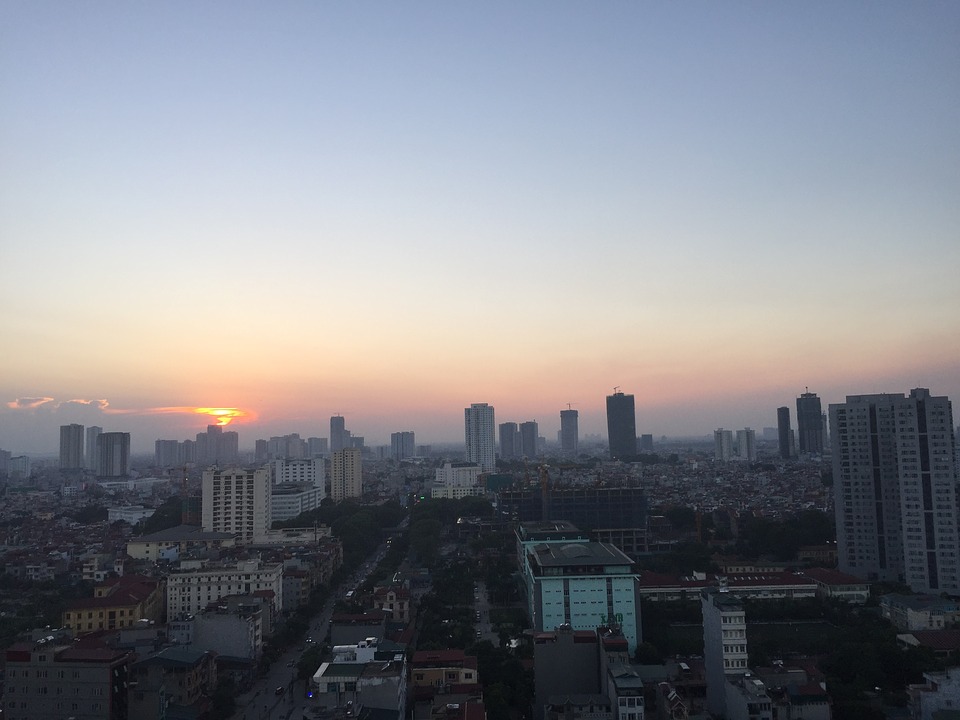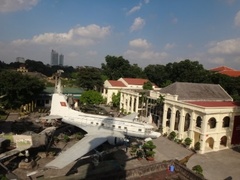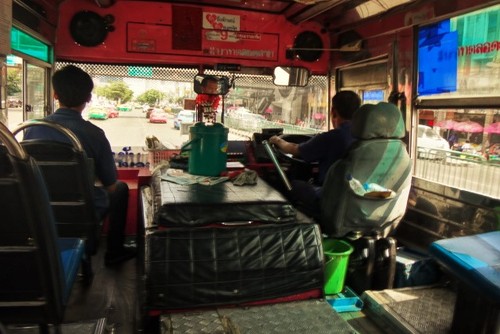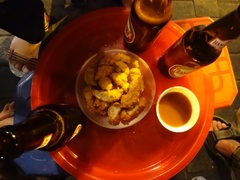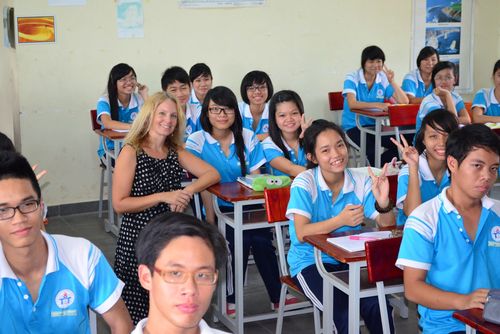This is one of the best museums in Hanoi locacted just off the Hoam Kiem Lake, so if you are based in that area, make sure to go by foot as it is a beautiful stroll of no more than half an hour. You start your voyage walking down the Hang Bai Road from the lake right until you pass a very admirable building of Trung Vuong Secondary School. Then, you turn right at the junction into Le Thuong Kiet Street – ‘The Vietnamese Women’s Museum’ is just few metres away.
The building itself looks very modern, colourful and inviting. There also is a nice café just beside, where you can relax over a cuppa coffee before entering this fascinating enterprise of knowledge. When you feel refreshed and ready take the steps up to the passage of the feminine world of Vietnam.
Full of enthusiasm, you pay for your ticket and you walk through the gallery to pursue a journey. A journey where the whole culture and society described through the eyes of Vietnamese women from over 50 different ethnic groups will astonish you over and over again.
You will learn about the role they played in Vietnamese History; Arts, Crafts, Family Life and Religion. All of these presented through a variety of objects, mannequins, photographs, information cards and videos which are thoroughly translated to English.
Wandering slowly through the Museum’s exhibitions you learn not only about women’s courage and determination during various wars and conflicts, about their skills in crafts, fashion and artwork, but also the role they played in the society as a whole. Thanks to this diversity of themes everyone will find something interesting, whether it is in the area of fashion, spirituality, history or sociology and that is just to name a few.
If you are interested in fashion, for example, you will be surprised to read that up until the mid-20th century having black teeth was in fashion and the darker they were the more beautiful female were considered to be. To do it, they were using a black powder derived from burned branches of The Thai, Khang and Lu burned tree mixed with water.
How is that for a beauty treatment? – Such an amazing contrast in understanding the canons of beauty. Especially when you know that now we all would do everything to have our teeth whitened… Upon moving on to the next showcase, you smile to yourself. The understanding that the idea of beauty is very subjective and depends on the culture of the society combined with the idea that principles that rule it are ever changeable. Quite an insight from just one small gallery.
With that in mind you move on to the next section, here you read about different marital traditions practised among different ethnic groups. Some are quite harsh and some are not, but one in particular draws your attention. That is mainly because yet again it presents something you are not expecting to come across in this Museum. You learn that in Vietnam’s Central Highlands a position of a women was and still is very strong in the society.
Firstly, it is there that the oldest women in the family is the most important and influential persona in family affairs.
Secondly, after marriage, unlike in the majority of tribes, the man lives in his wife’s home and their children take on their mother’s family name!
Thirdly, girls are the ones who inherit family wealth. That means that when the child is born- it is the female not a male offspring that brings smiles and relief to all the family members.
An interesting example of a matriarchal society that is so unusual in the world we live in. Upon finishing reading it you stop to think. Looking over to a courtyard you take your learnings in - nothing is set in stone, each social group builds its own unique hierarchy which becomes the core of given society and each of them can teach us something.
From fashion, to family and tradition, now you move on to the world of ritual and faith. This new gallery you just entered is a profound explanation of feminine spiritual beliefs…it tells a story of Mother Goddess, considered to be a supreme deity and her 4 reincarnations: Heaven, Earth, Water and Mountains & Forests, each responsible for different areas.
Collectively she is seen by her worshippers as a mother of everyone- protecting, supporting, and giving strength to overcome any negatives that we may encounter. It is a deeply spiritual room and upon reading about all these goddesses you find yourself in a reflective mood which perfectly prepares you for what is next to learn…
Thus far, venturing through these galleries you are taken on an odyssey starting from art and fashion, to powerful women in the Central Highlands and right through to female goddesses- all that might give you an impression that women in Vietnam are living on a pedestal. Unfortunately this is not the case…
This last section of the Museum tells the story of female street vendors. They are an integral part of Hanoi streets. But what do we know about them? Did you ever wonder why they are here, where are they from, how does their life look like?
Women who are tirelessly walking around the streets of Hanoi with bamboo baskets hanging across their backs filled with a variety of foods or pushing bicycles that look like tiny supermarkets. Upon watching the video and reading information cards you learn that there are thousands of them here.
They mainly come from rural villages, they work 7 days a week, over 12 hours a day and earn just enough to survive and support their families. Every one of them has a story to tell, and it is not a cheerful one. It might be that her husband is sick or died, or perhaps because they have only one tiny rice field which gives them enough food for 3 months and after that there is no income for the whole family other than what she can earn.
That last segment brings all the puzzles together and allows one to understand the bigger picture of what it means to be a women in Vietnam! Filled with various thoughts you walk down the stairs and each step brings some new understanding of the reality around you.
So when you leave the museum grounds and you encounter a smiley lady selling oranges from bamboo baskets… somehow you don’t mind at all when she tells you 50 000 instead of 5000 dong for a bag of oranges. You pick them up with a genuine smile on your face…
Vietnamese Women’s Museum
- Address: 36 Ly Thuong Kiet Street, Hoan Kiem, Hanoi
- Entrance fee: around 30,000 VND
- Opening hours: 8:30-4:30pm, closed on Monday
- Explanation in English: Very Good
- T: (04) 3825 9936 F: (04) 3825 9129;
- Admission: 30,000 dong
Related Pages

